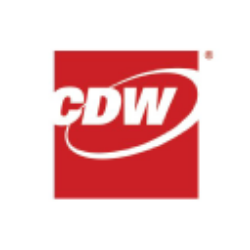Netflix, Inc. (NFLX) Bulls vs. Bears Analysis
Overview
Netflix, Inc. (NASDAQ: NFLX) remains one of the most polarizing stocks in the streaming industry, with investors divided on its long-term growth potential, competitive positioning, and ability to navigate evolving market dynamics. Below is a comprehensive breakdown of the bullish and bearish theses, supported by financial metrics, strategic initiatives, and industry trends.
#Bulls: The Optimistic Case for Netflix
1. Dominant Market Leadership in Streaming
Netflix controls ~8% of total U.S. TV viewing time (per Nielsen) and is the #1 streamer by engagement, revenue, and profits globally. Its scale advantages are unmatched:
- 260 million paid subscribers (Q1 2024), with a 97% retention rate in core markets.
- 2+ hours of daily viewing per member, demonstrating addictive content and platform stickiness.
Strategic moats:
- Data-driven content curation: Algorithms personalize recommendations, reducing churn.
- Global distribution infrastructure: Low latency streaming to 190+ countries.
2. Unrivaled Content Engine Driving Cultural Relevance
Netflix’s $17B annual content budget funds a diverse, high-quality slate that dominates pop culture:
| Content Category | Key Examples (2023–2024) | Impact |
|---|---|---|
| Blockbuster Series | Stranger Things, Squid Game S2 | 100M+ views within 4 weeks of release |
| Award-Winning Films | Maestro, The Killer | 18 Oscar nominations in 2024 |
| Global/Local Hits | 3 Body Problem (China), Griselda | Top 10 in 90+ countries |
| Live Events | WWE Raw (2025), Netflix Cup | Expands into sports entertainment with minimal capex |
Theodore Sarandos (Co-CEO):
"Our films premiere to over 100M views, proving we can penetrate the cultural zeitgeist without theaters. We’re creating watercooler moments at scale."
3. Monetization Innovations Accelerating Revenue
Netflix’s multi-pronged monetization strategy is unlocking new revenue streams:
A. Paid Sharing Initiative
- Rolled out globally in 2023, converting 100M+ freeloaders into paying accounts.
- +8% QoQ subscriber growth in regions with full enforcement (e.g., LATAM, Europe).
B. Ad-Supported Tier (AVOD)
- Ads plan subscribers: 40M+ (20% of new sign-ups).
- CPMs: $35–$45 (vs. YouTube’s $15–$25), driven by premium audience demographics.
- Projected to generate $3B+ annual ad revenue by 2025 (UBS estimates).
C. Pricing Power
- 2023–2024 price hikes: 10–20% in major markets, with minimal churn impact.
- ARM (Average Revenue per Member): $16.30 (Q1 2024), up 7% YoY.
4. Global Growth Runway
Only 35% of Netflix’s revenue comes from APAC, LATAM, and Africa—regions with underpenetrated broadband markets:
| Region | 2024 Subscriber Growth (YoY) | 2025 Opportunity |
|---|---|---|
| Asia-Pacific | +12% | India (low-cost mobile plan at $2.50/mo) |
| Latin America | +9% | Brazil (local hits like Sintonia) |
| Africa | +15% | Nigeria (local-language originals) |
Greg Peters (Co-CEO):
"Streaming accounts for <10% of TV time in most countries. Our runway is measured in decades, not years."
5. Financial Discipline & Profitability
Netflix’s pivot to free cash flow (FCF) positivity has silenced bears:
| Metric | 2022 Actual | 2023 Actual | 2024 Guidance |
|---|---|---|---|
| Revenue | $31.6B | $33.7B | $38.5B |
| Operating Margin | 18% | 21% | 24% |
| Free Cash Flow | $1.6B | $4.5B | $6.0B+ |
| Share Buybacks | $2.8B | $3.5B | $5.0B |
Spencer Neumann (CFO):
"We’re past the cash-burn phase. Our model now funds content, buybacks, and debt reduction simultaneously."
#Bears: The Risks and Challenges
1. Intensifying Competition in Streaming
The rise of Disney+, Max, and Amazon Prime Video has fragmented the market:
| Competitor | Subscribers (2024) | Content Spend (2024) | Key Advantage |
|---|---|---|---|
| Disney+ | 160M | $27B (studio-wide) | Franchises (Star Wars, Marvel) |
| Amazon Prime | 200M+ | $15B | Bundled with Prime shipping |
| YouTube | 100M (Premium) | N/A | UGC + Short-form dominance |
Key risks:
- Churn: 15% of Netflix users also subscribe to 3+ rivals (Antenna data).
- Price wars: Ad tiers now start at $6.99/month (vs. Netflix’s $6.99 ads plan).
2. Saturation in Core Markets
Netflix’s U.S./Canada (UCAN) growth is plateauing:
| Metric | Q1 2024 | YoY Change |
|---|---|---|
| UCAN Revenue | $5.6B | +4% |
| UCAN Subscribers | 80M | +1.5% |
| UCAN ARM | $17.20 | +3% |
Jessica Reif Ehrlich (BofA):
"Netflix needs to squeeze more dollars from existing users, not just add subs. That’s a tougher game."
3. Content Spend: A Double-Edged Sword
Netflix’s $17B annual content budget creates risks:
- Hit dependency: 70% of viewing comes from <10% of titles.
- Amortization costs: $10B+ annual content amortization weighs on GAAP earnings.
- Talent inflation: A-list deals like Stranger Things ($30M per season for cast).
Content ROI Challenges:
| Title | Budget | Viewership (First 28 Days) | Estimated Break-Even? |
|---|---|---|---|
| The Gray Man | $200M | 250M hours | No (high production cost) |
| Citadel | $300M | 180M hours | No |
4. Ad Tier Execution Risks
Netflix’s ad business faces hurdles:
- Limited scale: 40M ads-tier subs vs. YouTube’s 300M CTV viewers.
- Measurement gaps: Lack of third-party verification tools (vs. iSpot.tv for linear TV).
- Ad load disputes: 4–5 minutes per hour (vs. Hulu’s 9+ minutes).
Advertiser Sentiment (2024 Survey):
5. Macroeconomic and Regulatory Risks
- Recession sensitivity: 62% of consumers would cancel Netflix first in a downturn (Bankrate survey).
- Password sharing crackdown backlash: 1-star app reviews spiked 30% post-enforcement.
- Regulatory pressures: EU’s Digital Services Act (DSA) compliance costs ($100M+ estimated).
Debt Profile:
| Debt Maturity | Amount | Interest Rate |
|---|---|---|
| 2026 | $1.0B | 4.875% |
| 2028 | $2.0B | 5.375% |
| 2031 | $1.5B | 4.625% |
Valuation & Investor Sentiment
Bullish Price Targets vs. Bearish Scenarios
| Analyst Firm | Rating | Price Target | Thesis Summary |
|---|---|---|---|
| Morgan Stanley | Overweight | $700 | Ad tier + paid sharing drive 20% EPS growth |
| Goldman Sachs | Neutral | $525 | "Fairly valued given competition risks" |
| Citigroup | Sell | $400 | "UCAN saturation limits upside" |
Technical Analysis (2024):
- Support: $500 (200-day moving average).
- Resistance: $650 (January 2024 high).
- RSI: 58 (neutral momentum).
Conclusion: The Balanced Perspective
Bulls see Netflix as the undisputed leader in a secular growth industry, with pricing power, global scale, and a proven playbook for monetization. Bears counter that saturation, content ROI risks, and competition could cap upside.
Final Metrics to Watch:
- Global ARM Growth (target: +5% YoY).
- Ad-tier penetration (target: 25% of total subs by 2025).
- FCF margin (target: 15% by 2026).
Netflix’s ability to balance content spend efficiency with subscriber monetization will determine whether it remains a FAANG-tier growth story or succumbs to media conglomerate economics.
What are the key factors influencing Netflix's stock price?
Netflix’s stock price is shaped by a combination of operational, financial, and macroeconomic variables:
1. Subscriber Growth and Retention
- Global Paid Memberships: Netflix’s ability to expand its subscriber base (260M+ as of Q1 2024) in underpenetrated markets (e.g., Asia-Pacific, Africa) drives investor optimism.
- Churn Rate: Retention remains strong at ~97% in mature markets, supported by personalized content recommendations and hit originals.
2. Monetization Levers
- ARM (Average Revenue per Member): Increased to $16.30 (Q1 2024) via price hikes, ad-tier adoption, and paid-sharing enforcement.
- Ad-Supported Tier: 40M+ subscribers on the $6.99/month plan contribute to higher margins (CPMs of $35–$45).
3. Content Investment Efficiency
- $17B Annual Content Spend: Must balance blockbuster hits (Stranger Things, Squid Game) with cost discipline.
- ROI Challenges: High-budget films like The Gray Man ($200M) underperform relative to costs.
4. Competitive Positioning
- Market Share: Controls ~8% of U.S. TV time but faces pressure from Disney+ (160M subs), Amazon Prime Video (200M+), and YouTube’s ad-supported dominance.
- Exclusive Bundles: Competitors like Apple TV+ bundle with hardware/services; Netflix remains standalone.
5. Financial Metrics
- Free Cash Flow: Improved to $6B+ (2024 guidance) due to reduced content cash burn.
- Operating Margin: Expanded to 24% (2024 guidance), signaling profitability despite high spend.
6. Macro Risks
- Currency Volatility: 60% of revenue comes from outside the U.S., exposing NFLX to FX fluctuations.
- Regulation: Compliance costs with EU’s Digital Services Act (DSA) and potential content censorship laws.
How does Netflix's content strategy compare to competitors?
Netflix’s content approach prioritizes volume, diversity, and data-driven curation, distinguishing it from rivals:
1. Original vs. Licensed Content
| Strategy | Netflix | Competitors |
|---|---|---|
| Originals | 60% of content budget; 35+ Emmy-nominated shows in 2023 | Disney+ (Marvel/Star Wars franchises), Max (House of the Dragon) |
| Licensed | Revives older hits (Suits, Breaking Bad) | Amazon Prime Video (NFL Thursday Night Football) |
| Global/Local | 50+ countries produce local-language hits (Sacred Games in India) | Paramount+ focuses on Western markets |
2. Genre and Format Diversity
- Live Events: WWE Raw (2025 deal), Netflix Cup (golf), and comedy specials (Chris Rock Selective Outrage).
- Interactive Content: Black Mirror: Bandersnatch and gaming integrations.
- Documentaries: Beckham and Tiger King drive non-fiction engagement.
3. Data-Driven Decision-Making
- Algorithmic Curation: Viewing patterns inform greenlight decisions (e.g., Wednesday renewed after 1B+ hours watched).
- A/B Testing: Thumbnails, trailers, and release schedules optimized for maximum engagement.
4. Competitor Weaknesses
- Disney+: Over-reliance on franchises risks creative fatigue.
- Amazon Prime Video: Content often serves as a Prime membership perk rather than a standalone draw.
- Max/Discovery+: Struggles to balance prestige HBO titles with reality-TV catalog.
What are the potential impacts of economic downturns on Netflix?
Netflix has historically shown resilience during recessions, but risks persist:
1. Consumer Behavior
- Subscription Stickiness: Streaming is often among the last expenses cut. In 2022, Netflix added 7.7M subs despite inflation spikes.
- Value Perception: Ad-supported tier ($6.99/month) attracts budget-conscious viewers; 20% of new sign-ups opt for ads.
2. Advertising Market Vulnerability
- Ad Spending Cuts: Brands may reduce CTV budgets, impacting Netflix’s $3B+ ad-revenue target for 2025.
- Measurement Pressures: Advertisers demand third-party verification (e.g., Nielsen), which Netflix is still scaling.
3. Content Production Costs
- Strike-Related Delays: 2023 WGA/SAG-AFTRA strikes pushed $1B+ in content spend into 2024, straining margins.
- Talent Inflation: A-list deals (e.g., Ryan Murphy’s $300M pact) become harder to justify in downturns.
4. Regional Sensitivity
- Emerging Markets: Countries like Nigeria (15% sub growth in 2024) may see slower adoption if discretionary spending drops.
- Currency Depreciation: A strong U.S. dollar could reduce international revenue (e.g., 10% FX headwind in 2022).
5. Historical Precedent
- 2008–2009 Recession: Netflix added 3M subs as DVD rentals declined, showcasing trade-down appeal.
- 2020 Pandemic Surge: Lockdowns drove 37M subscriber adds, though 2021 saw a pull-forward hangover.
6. Mitigation Strategies
- Price Tier Diversification: $6.99–$22.99/month plans cater to varied budgets.
- Partnerships: Microsoft-backed ad tech and Walmart’s bundled subscriptions expand reach.
Netflix’s stock trajectory hinges on balancing these variables while maintaining its edge in content innovation and global scalability.


















